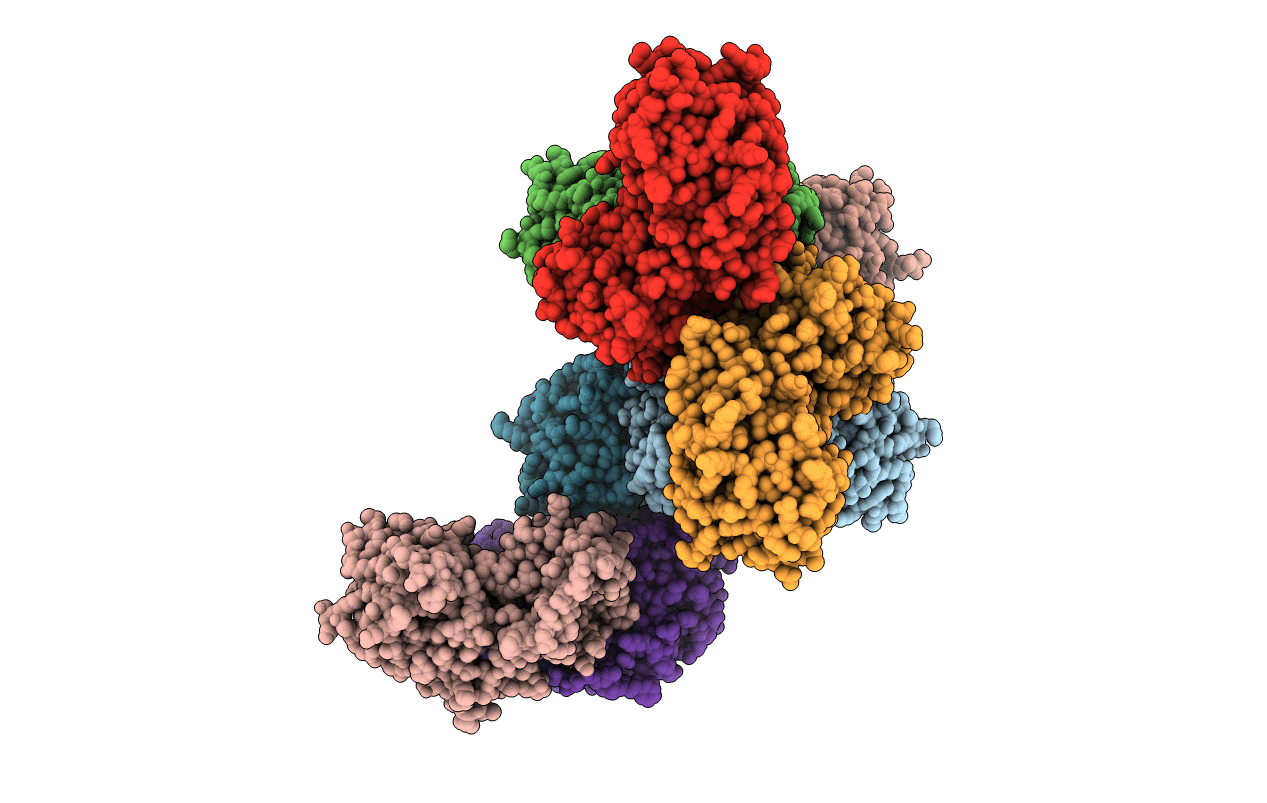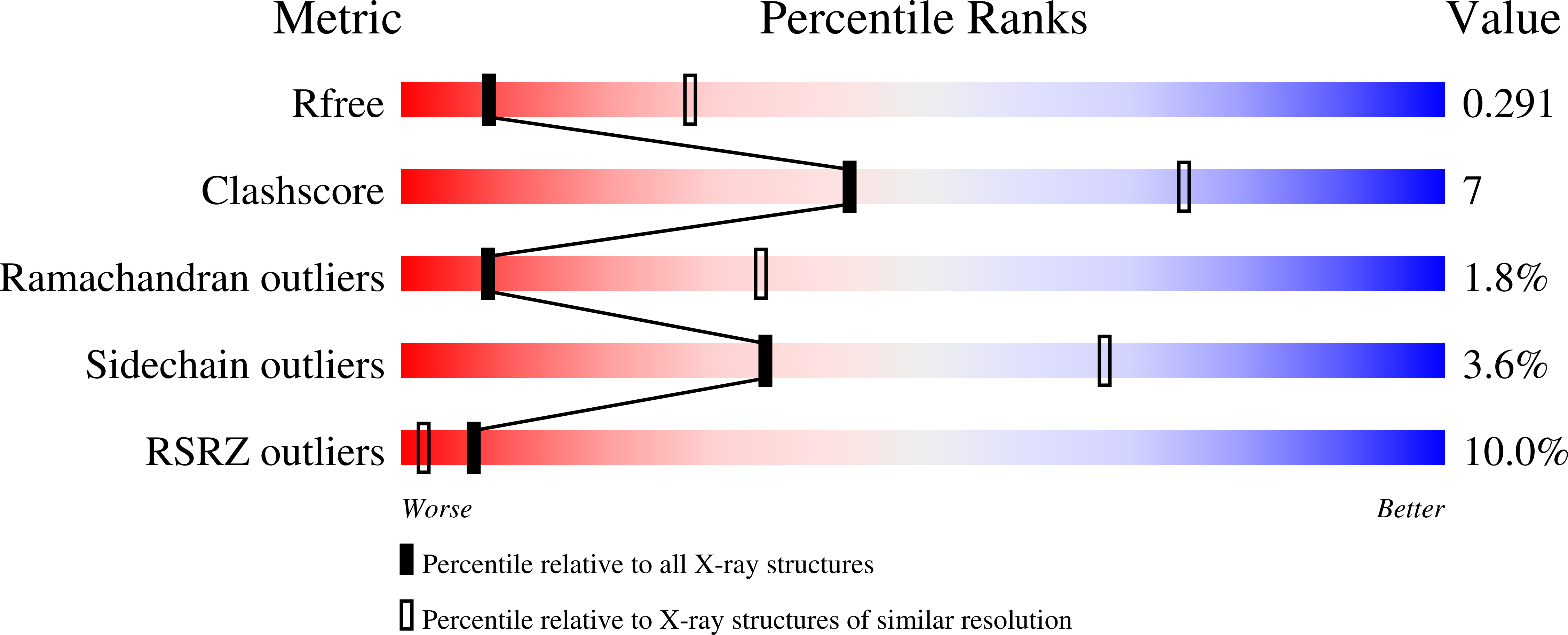
Deposition Date
2020-10-19
Release Date
2020-12-30
Last Version Date
2025-10-01
Entry Detail
PDB ID:
7APR
Keywords:
Title:
Bacillithiol Disulfide Reductase Bdr (YpdA) from Staphylococcus aureus
Biological Source:
Source Organism:
Staphylococcus aureus (strain COL) (Taxon ID: 93062)
Host Organism:
Method Details:
Experimental Method:
Resolution:
3.10 Å
R-Value Free:
0.29
R-Value Work:
0.24
R-Value Observed:
0.24
Space Group:
P 61 2 2


